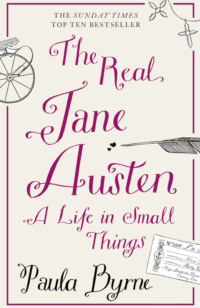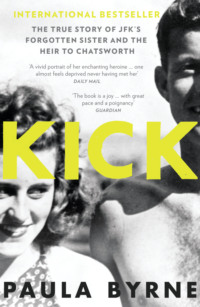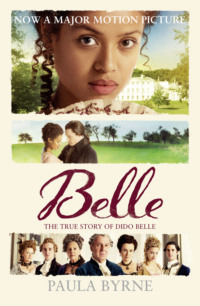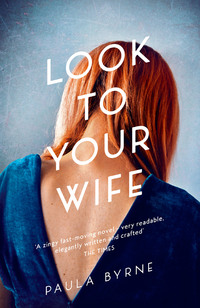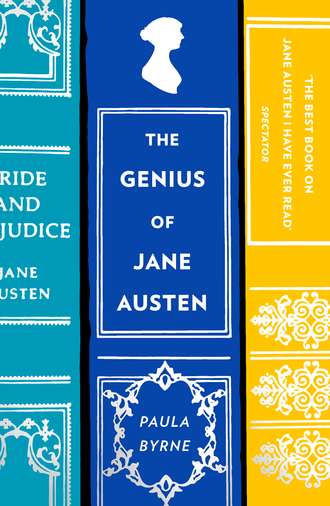
Полная версия
The Genius of Jane Austen: Her Love of Theatre and Why She Is a Hit in Hollywood
In contrast with Berquin and William Hayley, who self-consciously used their plays to instruct, Austen entertains. Furthermore, even as she abandoned plays and turned to fiction, she began an apprenticeship in the art of dramatic dialogue and quasi-theatrical techniques that was to distinguish her mature writing. Austen’s juvenilia reveals a deep familiarity with the most popular plays of the period: the works of Garrick, Fielding, Sheridan and Cowley.69
The Steventon theatricals took place between 1782 and 1790, coinciding with the period in which Jane Austen’s juvenile literary works were written. Given the abundance of dramatic entertainment that she was exposed to at this time, it is not at all surprising that there were attempts at playwriting among her youthful literary efforts. Contrary to popular belief, however, it was not only in her childhood at Steventon that Austen developed her interest in the drama. In the period between the composition of the early versions of Northanger Abbey, Pride and Prejudice and Sense and Sensibility and the completion of the mature novels, Austen was taking part in private theatricals, writing dramatic dialogues and turning her favourite novel into a five-act comedy.
Jane Austen took part in private theatricals in 1805 when she was thirty. The death of her father early in the same year had a profound effect on the lives of the three dependent women whom he left behind, who were not to find a permanent home until they settled at Chawton in 1809. Some time after her father’s death Austen may have redrafted and put the finishing touches to a short epistolary novel, Lady Susan. In June, the Austen sisters left Gay Street in Bath, collecting their niece Anna on the way, and set out for her brother Edward (Austen) Knight’s Godmersham home. During her time at Kent, Jane spent many hours amusing her favourite nieces, Fanny and Anna, with play-acting. It was here that Anne Sharp, the children’s governess, formed a friendship with Jane Austen that was to last for the rest of the latter’s life. In the Godmersham private theatricals, Miss Sharp played the male roles and was clearly a great success.
The unpublished diaries of one of those nieces, Fanny Knight, reveal that aunt Jane had no scruples about play-acting. Fanny records a game of ‘school’ in which her aunts, grandmother and governess dressed up and took part:
Wednesday 26 June. We had a whole holiday. Aunts and Grandmama played at school with us. Aunt C was Mrs Teachum the Governess Aunt Jane, Miss Popham the teacher Aunt Harriet, Sally the Housemaid, Miss Sharpe the Dancing Master the Apothecary and the Serjeant, Grandmama Betty Jones the pie woman and Mama the bathing woman. They dressed in Character and we had a most delightful day. – After dessert we acted a play called Virtue Rewarded. Anna was the Duchess St Albans, I was the Fairy Serena and Fanny Cage a shepherdess ‘Mona’. We had a bowl of Syllabub in the evening.70
Although improvisational play was part of the fun, the small company of women also included their own plays in their repertoire. Virtue Rewarded may well have been composed by Anne Sharp, with roles written specifically for the children.71
The theatricals continued throughout June and July. Then on 30 July Fanny recorded two more amateur performances, including a play possibly written by Anne Sharp called Pride Punished: or Innocence Rewarded:72 ‘Aunt C and J, Anna, Edward, George, Henry, William and myself acted The Spoilt Child and Innocence Rewarded, afterwards we danced and had a most delightful evening.’73 Bickerstaffe’s The Spoilt Child was a great favourite on the London stage, popularised by Mrs Jordan who played the cross-dressed role of ‘Little Pickle’, the naughty child of the title. If Fanny played the part of Little Pickle and Anne Sharp his father, it is plausible that Jane Austen took the role of the spinster aunt, Miss Pickle. The most popular scene in the play is when the naughty child catches his aunt and her lover in the garden reciting love poetry and planning their elopement, and sews their clothes together.
It was during the 1805 Kent visit that Jane Austen read Thomas Gisborne’s dour Enquiry into the Duties of the Female Sex. She would have been amused to discover Gisborne’s assertion that play-acting was injurious to the female sex through encouraging vanity and destroying diffidence ‘by the unrestrained familiarity with persons of the other sex, which inevitably results from being joined with them in the drama’.74 Jane wrote to Cassandra, ‘I am glad that you recommended Gisborne for having begun, I am pleased with it, and I had quite determined not to read it’ (Letters, p. 112). This remark suggests a softening of her prior scepticism towards Gisborne, yet she clearly had no intention of putting his prescriptions into practice and giving up her involvement with private theatricals.75 Jane Austen not only acted in plays at the same time that she was reading Gisborne, she also committed the grave offence of luring children into this dangerous activity, a practice that Gisborne particularly abhorred:
Most of these remarks fully apply to the practice of causing children to act plays, or parts of plays; a practice of which parents, while labouring to vindicate it, sometimes pronounce an emphatical condemnation, by avowing a future purpose of abandoning it so soon as their children shall be far advanced in youth.76
Gisborne’s prejudice directly opposes Arnaud Berquin’s championing of the moral efficacy of family theatricals. Austen appears to have been more sympathetic to Berquin’s view, judging by her enthusiasm for private theatricals among Edward Knight’s young family at Kent. Perhaps she was rekindling memories of happier days at Steventon in her present uncertain state of home (she was to live at yet another brother’s home in Southampton before eventually settling at Chawton).
In the meantime she continued not only to act with the children, but also returned to drama writing. It may well have been at this time that, with the help of her niece Anna, she put the finishing touches to her five-act play, Sir Charles Grandison: or The Happy Man, a burlesque dramatisation of her favourite novel, Richardson’s The History of Sir Charles Grandison.77
There are two more notable occurrences that reflect Austen’s interest in the drama. There still exists in the Austen-Leigh family collection a short unidentified document, untitled and consisting of two dramatic dialogues on the business of child-rearing in the early nineteenth century. From 1806 to 1809 Mrs Austen, her two daughters and Martha Lloyd were living in Southampton, for part of the time with Frank Austen and his newly pregnant wife Mary Gibson. As was the convention, the women read novels and plays aloud. This provided Jane Austen with another opportunity for the composition of amusing playlets on the subject of baby-care and motherhood.78
In these dramatic dialogues, a first-time mother, Mrs Denbigh, is seen neglecting her child, and spending almost all of her time in the garden looking at her auriculas. She pleads ignorance in child-rearing as ‘I was just come from school when I was married, where you know we learnt nothing in the way of medicine or nursing’. The incompetence of Mrs Denbigh (and her Irish nanny) is contrasted with the sensible advice and practical skills of her friend Mrs Enfield:
MRS ENFIELD: [Endeavours to look at the back] Ah Nurse his shirt sticks! Do bring me some warm water & a rag.
MRS DENBIGH: [rising] I shall faint if I stay.
MRS ENFIELD: I beg you will stay till we can see what can be done.
MRS DENBIGH: [takes out her smelling bottle] I will try – how unfeeling [aside].
MRS ENFIELD: [applies a mild plaister] Now nurse you must change the plaister night & morning, spread it very thin, & keep a few folds of soft linen over it – Will you bring me a clean shirt.
NURSE: [going out] Yes Ma’am, if I can find one – I wish she and her plaister were far enough [aside].79
The dialogues are didactic, as they are meant to be, but the selfish Mrs Denbigh is comically drawn. Her rattling conversations perhaps foreshadow the monologues of Miss Bates and Mrs Elton in Emma.80
The other significant event in these later years took place in 1809. It was then, only two years before starting work on Mansfield Park, that Austen acted the part of Mrs Candour in Sheridan’s School for Scandal. In writing of Sir William Heathcote of Hursley Park, Hampshire, in 1898, the novelist Charlotte M. Yonge recalled: ‘His mother was Elizabeth, daughter of Lovelace Bigg-Wither of Manydown Park in the same country … She lived chiefly in Winchester, and it may be interesting that her son remembered being at a Twelfth day party where Jane Austen drew the character of Mrs Candour, and assumed the part with great spirit.’81
There is no reason to doubt this evidence. Jane Austen’s friendship with the Manydown family lasted all her life. Both she and Cassandra often used to spend the night at Manydown when they attended the Basingstoke balls as girls. Jane informed Cassandra of a twelfth day party at Manydown in her letter to Cassandra of 27 December 1808:
I was happy to hear, cheifly [sic] for Anna’s sake, that a Ball at Manydown was once more in agitation; it is called a Child’s Ball, & given by Mrs Heathcote to Wm – such was its’ beginning at least – but it will probably swell into something more … it is to take place between this & twelfth-day. (Letters, p. 160)
The postscript to her next letter (10 January 1809) suggests that she attended the festivities: ‘The Manydown Ball was a smaller thing than I expected, but it seems to have made Anna very happy. At her age it would not have done for me’ (Letters, p. 165). If this was the same party that Sir William recollected, then Jane Austen was acting in a Sheridan play only two years before she began writing Mansfield Park. This would seem to be still stronger evidence against the notion that the novel offers an unequivocal condemnation of amateur theatricals.
Jane Austen’s artistic development was clearly influenced by the vogue for private theatricals that swept Britain in the late eighteenth and early nineteenth century. Contrary to popular belief, it was not merely as a passive spectator that she was exposed to private theatricals as a young girl. Her plays show that she was actively engaged in the amateur dramatics at Steventon, and her involvement in private theatricals in Kent, Southampton and Winchester confirm an interest that was to be crystallised in the writing of Mansfield Park.
2
The Professional Theatre
In 1790 Jane Austen wrote Love and Freindship, a parody of the popular heroine-centred, sentimental novel. The cast of characters includes two strolling actors, Philander and Gustavus, who eventually become stars of the London stage. As a final joke, these two fictional characters are transformed into real figures: ‘Philander and Gustavus, after having raised their reputation by their performance in the theatrical line in Edinburgh, removed to Covent Garden, where they still exhibit under the assumed names of Lewis & Quick’ (MW, p. 109).
William Thomas (‘Gentleman’) Lewis (1748–1811) and John Quick (1748–1831) were well-known comic actors of the Covent Garden Company. The roles of Faulkland and Bob Acres in Sheridan’s The Rivals were created for them, and Quick was also the original Tony Lumpkin in Goldsmith’s She Stoops to Conquer. ‘Gentleman’ Lewis earned his appellation for his rendering of refined roles. A fellow actor, G. F. Cooke, called him ‘the unrivalled favorite of the comic muse in all that was frolic, gay, humorous, whimsical, and at the same time elegant’.1 Leigh Hunt considered that ‘vulgarity seems impossible to an actor of his manners’,2 and Hazlitt’s testimony ranked him high above the comedians of his day: ‘gay, fluttering, hare-brained Lewis … all life and fashion, and volubility, and whim; the greatest comic mannerist that perhaps ever lived.’3
Quick, conversely, was a fine ‘low’ actor, ‘the prince of low comedians’.4 He was a diminutive man who breathed life into the roles of clowns, rustics and servants before he became famous with his performance of Tony Lumpkin. Unsurpassed in playing old men, he was George III’s favourite actor.5 Hazlitt records that he ‘made an excellent self-important, busy, strutting, money-getting citizen; or a crusty old guardian, in a brown suit and a bob-wig’.6
By the 1790s Lewis and Quick were among the highest-paid actors in the Covent Garden Company.7 Austen’s reference to this comic duo reveals her knowledge of the contemporary stars of the London stage, and suggests the young girl’s eagerness to be included in the theatre-loving clan of her brothers and her cousin Eliza de Feuillide, to whom Love and Freindship was dedicated (MW, p. 76). The joke is more than merely a glancing and amusing allusion to an immensely popular pair of eighteenth-century comedians: it also reveals a striking and specific interest in the nuanced world of high and low comedy in the late Georgian theatre. This interest was to have a strong influence on Austen’s comic vision. As will be demonstrated, her sense of the interplay between genteel characters and low ones was an important part of her awareness of how comedy works.
The first reference to the professional theatre in Austen’s letters is a mention of Astley’s Theatre in London, in August 1796: ‘We are to be at Astley’s tonight, which I am glad of’ (Letters, p. 5). The history of this theatre, and its importance in the growth of the illegitimate stage, has been overlooked by Austen scholars.
Astley’s Amphitheatre was an equestrian theatre built on the south side of the river in Lambeth by Philip Astley in 1770.8 When first opened it was merely an open-air circus ring with covered seats. By 1780 Astley had roofed over the whole of his ring, which was now called the Amphitheatre Riding House. It was renamed the Royal Grove in 1784, when Astley obtained a royal patent, and in 1787, he added ‘burletta’ to his amphitheatre licence.9 It was popular not only for equestrian events, but for acrobatics, swordsmanship, musical interludes, songs and dancing. In 1794 the amphitheatre was burnt to the ground. It was rebuilt in the following year with the new name, the Amphitheatre of Arts.10 In 1796, when the Austens visited Astley’s, the entertainment was more elaborate than ever before. Thirty-five new acts were advertised, and, as a special attraction, two Catawba Indian chiefs performed dances and tomahawk exercises.11 Astley’s Amphitheatre survived two fires and lasted until 1841.
As with many of the minor, unpatented London theatres, Astley’s circumvented the licensing laws by exploiting the ambiguity of the term ‘burletta’ and slipping in straight plays among the main entertainments.12 The Licensing Act of 1737 confined legitimate theatrical performances to two patent playhouses in London, Drury Lane and Covent Garden. The Act prohibited the performances of plays elsewhere for ‘hire, gain or reward’ and gave the Lord Chamberlain statutory powers to examine all plays.13 The monopoly of the patents was broken in 1740, however, by Henry Giffard who re-established his theatre in Goodman’s Fields and avoided the ‘hire, gain or reward’ clause by claiming to charge only for the music and giving the play free. The authorities tolerated Giffard’s theatre until David Garrick joined the company in 1741. The unprecedented success of Giffard’s new actor ensured that both he and Garrick were offered engagements at Drury Lane, and Goodman’s Fields was closed once more.
Giffard had demonstrated that the law could be circumvented. Other theatre managers followed suit and found ways of evading the £50 fine and the threat of the loss of their licence. Samuel Foote sold tickets inviting the public to ‘drink a dish of chocolate with him’ at noon, and provided entertainments free of charge, thereby inventing the matinee. This led to his obtaining a summer patent for his Little Theatre in the Haymarket in 1766.14
Foote’s patent was followed by a number of patents for provincial theatres. In London, by the early nineteenth century, the proliferation of illegitimate theatres posed a formidable challenge to the patents. By 1800 there were seven minor theatres offering regular entertainment: Sadler’s Wells, Astley’s, the Royal Circus, the Royalty in east London, Dibdin’s Sans Souci, the King’s, Pantheon and the first Lyceum.15 In 1826 Edward Brayley included eleven minor theatres in his Historic and Descriptive Accounts of the Theatres of London, and F. G. Tomlins, in A Brief View of the English Stage (1832), listed thirteen minor theatres operating in London.16
Astley’s was not only visited by Jane Austen. It was also chosen by her as the location for a major turning point in Emma.17 It is Astley’s Theatre where Robert Martin meets Harriet and rekindles the love affair between them, thus clearing the way for Emma and Mr Knightley to be united. Scholars have assumed that Austen was referring to the equestrian amphitheatre by Westminster Bridge in Lambeth. But following the success of his amphitheatre, which only operated on a summer licence, Astley opened a new theatre on Wych Street in the Strand in 1806.18 He called his new theatre the Olympic Pavilion, but it was also known as Astley’s Pavilion, the Pavilion Theatre, the Olympic Saloon, and sometimes simply Astley’s.19 The theatre specialised in equestrian events, but Astley also obtained a licence, through the influence of Queen Charlotte, for music and dancing.20
According to the testimony of one nineteenth-century theatre historian, though Astley conducted several other establishments, the new Olympic theatre was ‘par excellence, “Astley’s” – a name which has become historic’.21 It was an especially popular place to take children. Astley had built his new theatre from the remains of some old naval prizes that he had bought. The deck of the ship was used for the stage and the floors.22 The new theatre was built like a playhouse, with a stage, orchestra, side-boxes, galleries and a pit surrounding the ring. It was the largest of London’s minor theatres and accommodated three thousand people.23 In writing about Astley’s in his A Brief View of the English Stage, Tomlins notes that it was ‘a name at which the youthful heart bounds, and the olden one revives. Jeremy Bentham pronounced it to be the genuine English theatre, where John Bull, whatever superior tastes he might ape, was most sincerely at home’.24
Jane Austen was not absolutely precise about dates in Emma: the theatre visit takes place some time in late summer and Harriet marries Martin shortly afterwards, in late September. This opens up the possibility of the Astley’s reference being to either the summer amphitheatre in Lambeth or the winter Olympic house off Drury Lane. Strictly speaking, the summer season commenced on Easter Monday and closed about the end of September or the beginning of October.25 Given that the Austens patronised the Lambeth Amphitheatre, Jane may well have intended the same theatre. On the other hand, the genteel John Knightleys visit Astley’s as a treat for their young boys, and Harriet, on quitting their box, is made uneasy by the size of the crowds. This suggests the superior Olympic Pavilion.26 The Lambeth Amphitheatre also had its own separate entrance for the boxes and the pit, with the gallery entrance fifty yards down the road, so it would be more likely that Harriet encountered large crowds at the Olympic.27
Nevertheless, whichever of Astley’s playhouses Austen intended when she was writing Emma in 1813, the allusion is of considerable interest, as the long-standing battle between the minor theatres and the patents had once again flared up that year, with the name ‘Astley’s’ at the centre of controversy. When Elliston opened up Astley’s in 1813 with the provocative name ‘Little Drury Lane Theatre’, he was almost immediately forced to close. He was able to reopen the theatre by reverting to its old name. In 1812 Astley had sold his theatre and licence to Robert Elliston for £2800.28 Almost as soon as the management passed into Elliston’s hands, he remodelled the playhouse in the hope of attracting a superior type of audience. He introduced a mixed programme of farce, pantomime and melodrama, all of course concealed under the term ‘burletta’. Though many of the minor theatres circumvented the law by similar methods, none had dared to do so in the direct vicinity of the patents. Perhaps Austen was sympathetic to Elliston’s crusade to compete against the patents, for he was one of her favourite actors, and, as we will see, she followed his fortunes throughout his career.
Astley’s was known for its socially diverse audience. It was ‘a popular place of amusement for all classes’.29 A friendly and unpretentious theatre, its tickets were priced well below those of the patents.30 The spectacle that it offered clearly appealed to families, and to people of all classes, much as the West End musical attracts thousands of people today. Austen had no compunction about visiting the minor theatres when she stayed in London, and her reference to Astley’s in Emma may indeed have been a gesture in support of them in their long battle to break the monopoly of the patents.
Given Jane Austen’s scrupulous sense of class and realism, and the particular concern in Emma with fine discriminations within social hierarchies, it is by no means fanciful to attach considerable weight to her choice of Astley’s for the reconciliation between Harriet and Robert Martin. Precisely because of its status as a minor, illegitimate theatre, it was a place where a yeoman farmer and a girl who is without rank (carrying the ‘stain of illegitimacy’, we are reminded in the same chapter) could mingle freely with the gentry.
Austen does mention the patented theatres in her other novels. In Sense and Sensibility, Willoughby ‘ran against Sir John Middleton’ in the lobby of Drury Lane Theatre, where he hears that Marianne Dashwood is seriously ill at Cleveland. In Pride and Prejudice Lydia Bennet, in complete disregard to the disgrace that she has brought on the family by her elopement, can only prattle: ‘To be sure London was rather thin, but however the Little Theatre was open’ (PP, p. 319). Lydia’s elopement takes place in August, and, as Austen was aware, the ‘Little Theatre’ in the Haymarket was the only house licensed to produce regular drama during the summer season. This is a fine example of Austen’s scrupulous sense of realism working in conjunction with her knowledge of the London theatre world. It is also worth noting that her favourite niece, Fanny Knight, with whom she often went to the theatre, was particularly fond of the ‘little’ theatre in the Haymarket, as opposed to the vast auditoriums at Covent Garden and Drury Lane. In her unpublished diaries Fanny complained that ‘Drury Lane is too immense’ and that she preferred ‘the dear enchanting Haymarket.’31
There is only one other mention of playgoing in Pride and Prejudice, a vague reference to an ‘evening at one of the theatres’ in which Elizabeth Bennet and Mrs Gardiner talked over intimate family matters in what was presumably a theatre box, while the rest of the party watched the action on the stage (PP, pp. 152–54). In Persuasion, Austen includes only a few vague references to the Theatre Royal on Orchard Street in Bath.32 However, she uses the same theatre in Northanger Abbey to structure an important plot link between John Thorpe and General Tilney. It is at the theatre that Thorpe, ‘who was never in the same part of the house for ten minutes together’ (NA, p. 95), falsely boasts to General Tilney that Catherine is the heiress to the Allen fortune, thus encouraging the General’s plan to invite her to Northanger Abbey.




